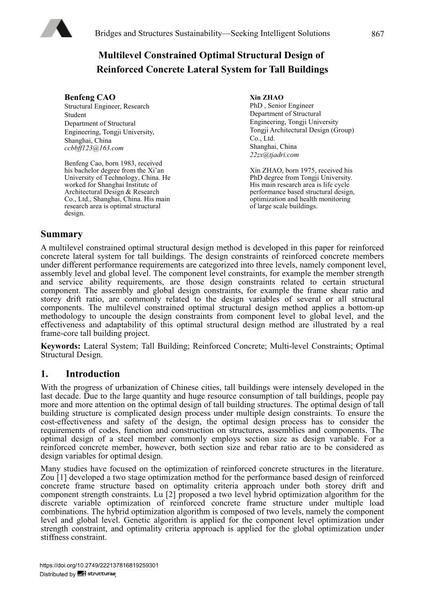Multilevel Constrained Optimal Structural Design of Reinforced Concrete Lateral System for Tall Buildings

|
|
|||||||||||
Détails bibliographiques
| Auteur(s): |
Benfeng Cao
Xin Zhao |
||||
|---|---|---|---|---|---|
| Médium: | papier de conférence | ||||
| Langue(s): | anglais | ||||
| Conférence: | IABSE Conference: Bridges and Structures Sustainability - Seeking Intelligent Solutions, Guangzhou, China, 8-11 May 2016 | ||||
| Publié dans: | IABSE Conference, Guangzhou, China, 8 – 11 May 2016 | ||||
|
|||||
| Page(s): | 867-872 | ||||
| Nombre total de pages (du PDF): | 6 | ||||
| Année: | 2016 | ||||
| DOI: | 10.2749/222137816819259301 | ||||
| Abstrait: |
A multilevel constrained optimal structural design method is developed in this paper for reinforced concrete lateral system for tall buildings. The design constraints of reinforced concrete members under different performance requirements are categorized into three levels, namely component level, assembly level and global level. The component level constraints, for example the member strength and service ability requirements, are those design constraints related to certain structural component. The assembly and global design constraints, for example the frame shear ratio and storey drift ratio, are commonly related to the design variables of several or all structural components. The multilevel constrained optimal structural design method applies a bottom-up methodology to uncouple the design constraints from component level to global level, and the effectiveness and adaptability of this optimal structural design method are illustrated by a real frame-core tall building project. |
||||
